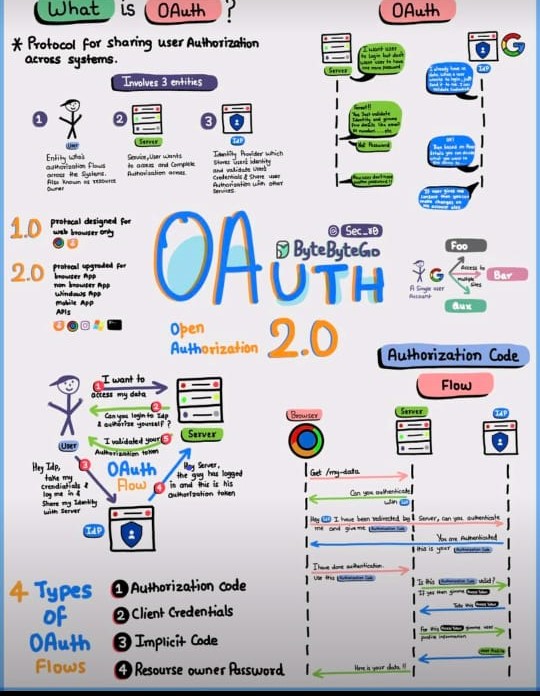It seems like there might be a typo in your question. I assume you are asking about OAuth 2.0 (not Auth2.0). OAuth 2.0 is an open standard for access delegation commonly used as a way for Internet users to grant websites or applications access to their information on other websites without sharing their credentials.
In a microservices architecture, OAuth 2.0 is often used to secure the communication between microservices, as well as to manage user authentication and authorization. Here’s a brief overview of how OAuth 2.0 can be used in a microservices environment:
- User Authentication:
- OAuth 2.0 can be used for user authentication by obtaining an access token after the user has successfully authenticated with an identity provider.
- This access token is then used to make requests to protected resources.
- Access Token:
- The access token is a key component in OAuth 2.0. It represents the authorization granted to the client.
- Microservices can use this access token to verify the identity of the user and determine whether the user has the necessary permissions to perform a specific action.
- Authorization Server:
- In a microservices architecture, you might have a dedicated authorization server responsible for issuing access tokens and validating them.
- This server can be a separate microservice or integrated into an existing authentication service.
- Token Validation:
- Microservices that receive requests from other services or clients can validate the access token with the authorization server to ensure its authenticity and check the user’s permissions.
- Service-to-Service Communication:
- OAuth 2.0 can be used to secure communication between microservices. Each microservice can have its own access credentials (client ID and secret) to authenticate with other services.
- Scopes:
- OAuth 2.0 supports the concept of scopes, which define the specific actions or resources a client is allowed to access. Microservices can check the requested scopes to ensure that the client has the necessary permissions.
Implementing OAuth 2.0 in a microservices architecture involves configuring the authorization server, handling token issuance and validation, and integrating OAuth 2.0 into each microservice’s security mechanisms. Popular frameworks and libraries, such as Spring Security, provide tools to simplify OAuth 2.0 integration in Java-based microservices. Similarly, there are libraries available for other programming languages and frameworks.




